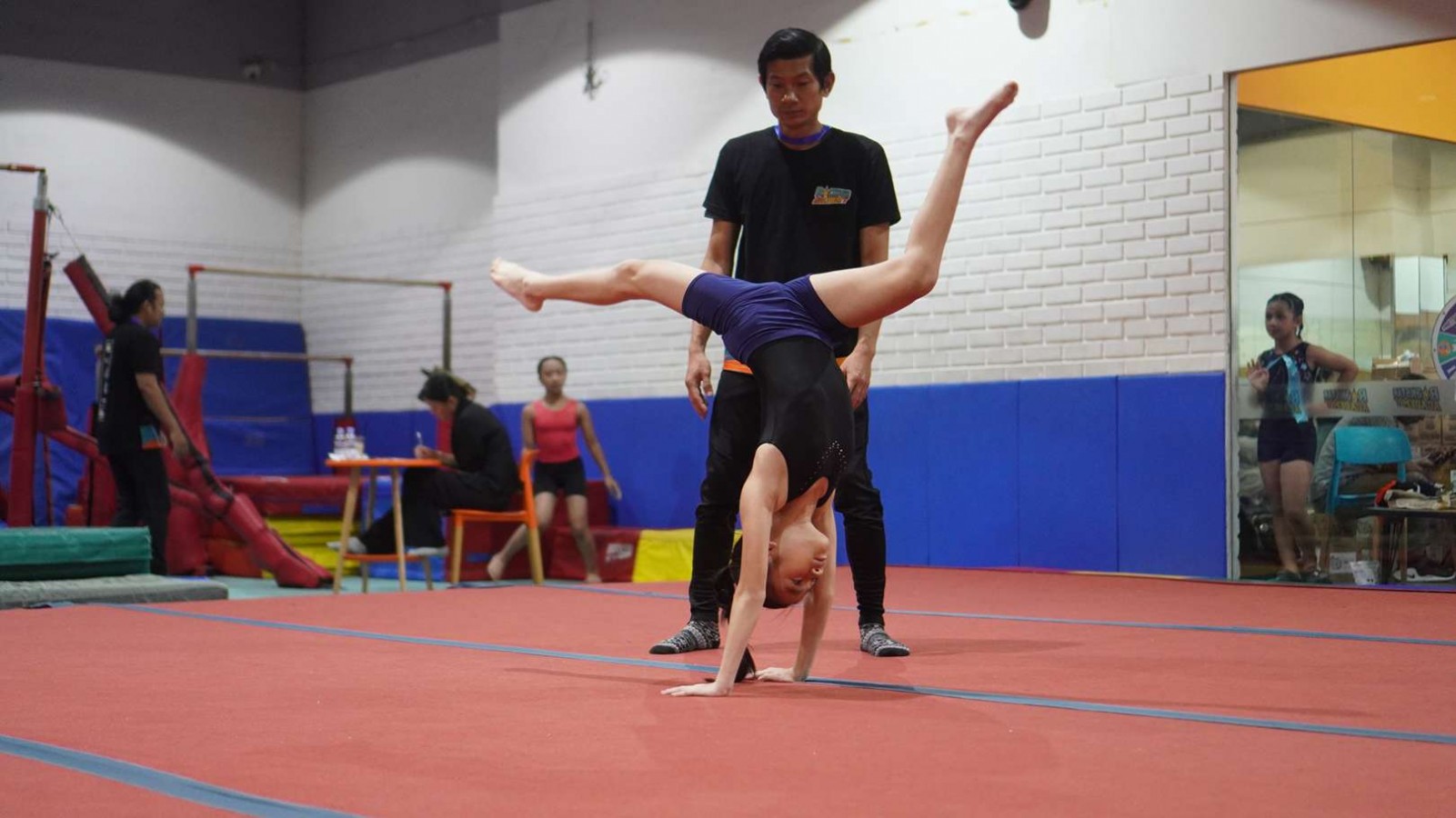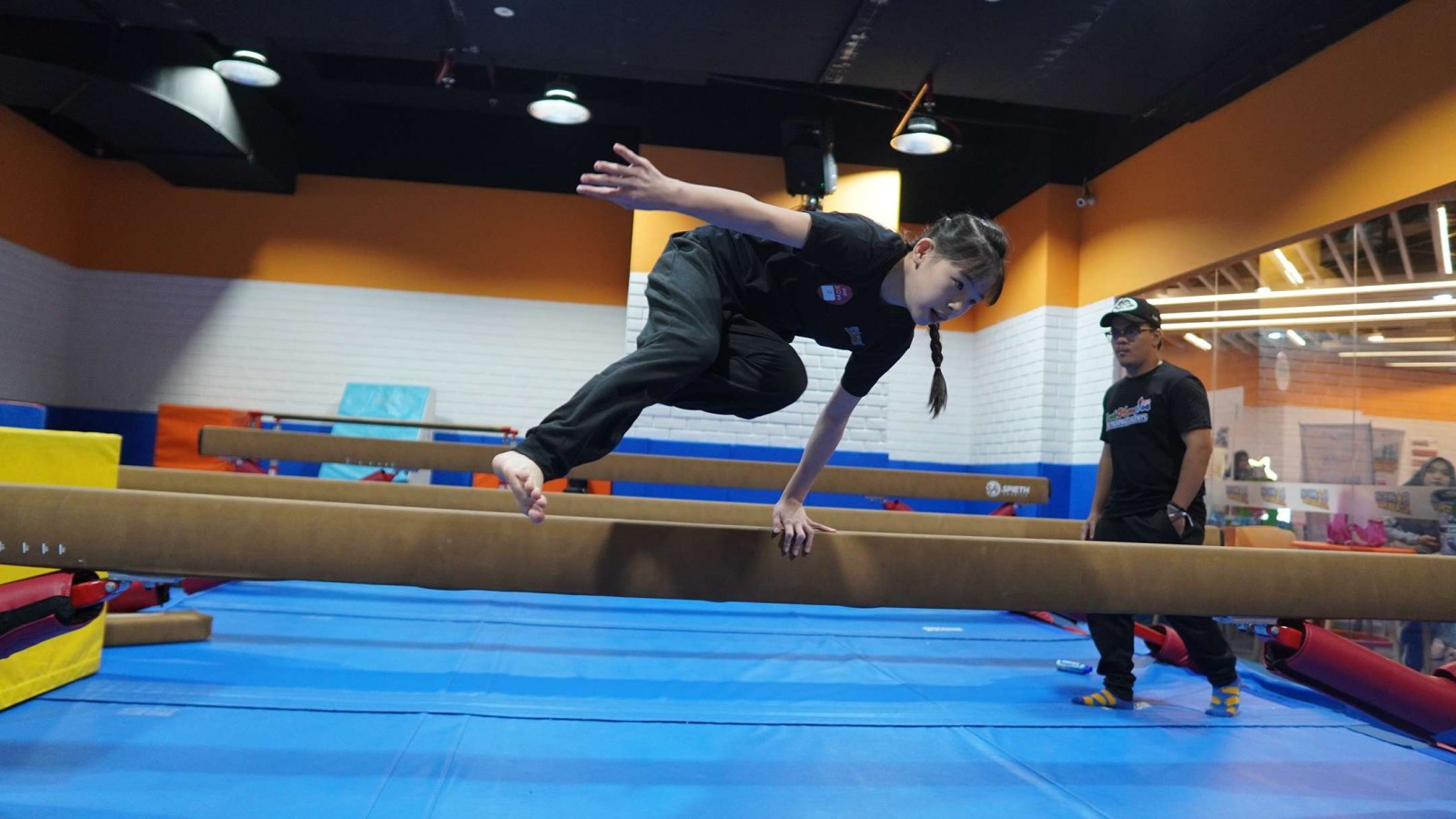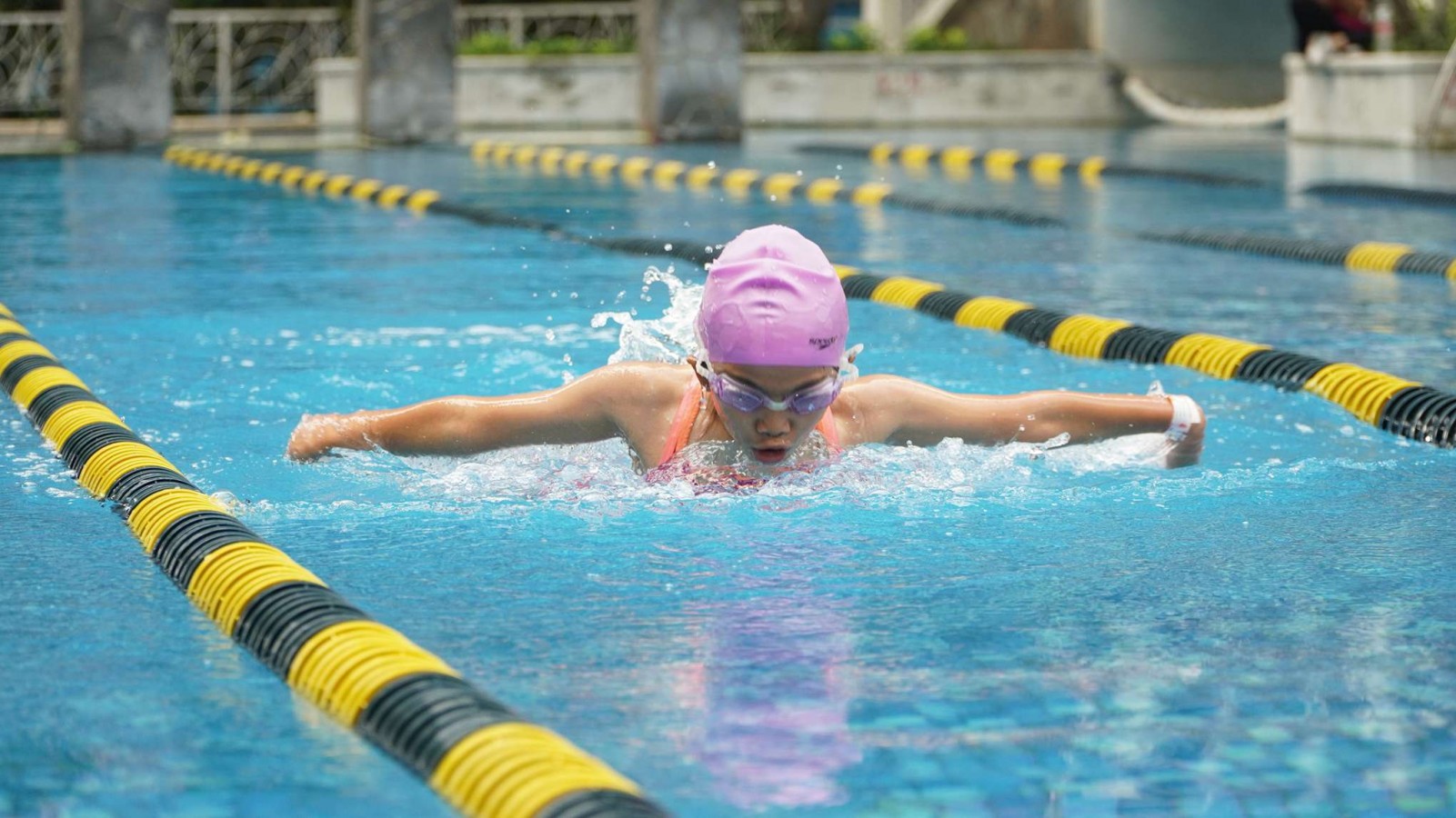Comprehensive Guideline to Improve Gymnastics Handstands

Handstands are one of the essential gymnastics skills that require balance, strength, and coordination. Mastering the handstand not only enhances gymnastic performance but also serves as other athletic foundations.
This comprehensive guide will walk you through everything you need to know to improve your gymnastics handstands, from understanding the basics to advancing your technique through drills and progression.
Step-by-Step Guide to Performing Handstands
A gymnastics handstand is a position where the body is fully extended vertically, supported solely by the hands with the arms straight and the body forming a straight line from the hands to the feet. It's a display of balance, core strength, and control.
Here’s detailed explanation on how to do gymnastics handstand:
1. Preparation
Before attempting a handstand, it's crucial to prepare your body. Start with a thorough warm-up focusing on the wrists, shoulders, and core muscles. Wrist circles, shoulder rolls, and dynamic stretches help increase blood flow and flexibility, reducing the risk of injury.
2. Positioning
Stand with your feet shoulder-width apart, facing forward. Extend your arms overhead and lean forward, placing your hands on the ground shoulder-width apart. Ensure that your fingers are spread wide to provide a stable base of support. Keep your arms straight, and your shoulders should be stacked directly over your wrists to maintain alignment.
3. Kick-up
With your hands planted firmly on the ground, shift your weight forward onto your hands while simultaneously kicking your legs upward. The kick-up motion generates momentum to propel your body into the handstand position. It's important to kick with control, aiming for a smooth and controlled entry into the handstand.
4. Finding Balance
As you kick up into the handstand, focus on stacking your joints (wrists, elbows, and shoulders) to create a straight line from your hands to your feet. Engage your core muscles to stabilize your body and maintain balance. Keep your legs together, toes pointed, and gaze fixed on the ground between your hands to help with alignment and focus.
5. Maintain
Once you've achieved the handstand position, focus on holding it for as long as possible. Maintain steady breathing and make subtle adjustments with your fingers and wrists to stay balanced. Keep your entire body tight and engaged, especially your core muscles, to prevent sagging or overarching.
6. End
To come out of the handstand, lower one leg at a time back to the ground while maintaining control and balance. Aim to land softly with your feet shoulder-width apart while absorbing the impact with your legs. As you become more proficient, work on transitioning smoothly between the handstand and standing positions.
Different Types of Handstands
All fundamental handstand variations necessitate the gymnast to maintain extended arms, straightened legs, and pointed toes. In the case of executing a straight-back handstand, additional requirements include tucking the head and maintaining a spine in a straight alignment.
Several forms of handstands include:
- Handstands with legs extended in a side or front split.
- Stag split handstands, involving a front split position with knees bent.
- A handstand characterized by a highly arched back, knees bent, and toes reaching towards the back of the head.
- The 'hollowback' variation, where the back is arched to extend the legs further forward than the head.
- One-handed handstands, where only one hand makes contact with the ground.
- Handstand push-ups, where the gymnast elevates and lowers their body while inverted on the hands.
Handstand Drills for Beginners
Handstand drills focus on acquiring the necessary body positions and building beginner-level muscle strength essential for executing a handstand. Here are several basic handstand drills you can try as beginners:
A. Lunges Drills
This drill consists of three segments:
- Begin with legs together, forming a T shape, then return to the initial straight stance. This helps in practicing the desired T shape during handstand entry and exit.
- Perform a lunge, transition into a T shape, and return to the lunge position. This aids in practicing the T shape from a lunge, which is ideal for commencing and concluding handstands.
- Execute a lunge, transition into a T shape, proceed to the handstand, maintain the T shape, return to the T shape, and then revert to the lunge. This segment focuses on performing the handstand while transitioning through the T shape.
B. Standing Handstand Shape with a T-Shirt
Hold a T-shirt above your head while standing with legs together. This drill aims to perfect the straight-body handstand shape. Engage core muscles, elongate the body by extending arms further upward, and maintain a tight posture.
C. Open Shoulder Walks Drills
This exercise aids in maintaining a compact body position crucial for sustaining a handstand. Begin in a plank position, slightly retract feet to enhance shoulder openness, and then walk in various directions.
D. Spiderman Against the Wall
Utilize the wall to ensure a completely straight body alignment. This drill facilitates achieving proper handstand form and is particularly effective for gymnastics skill enhancement.
E. Handstand Shaping on the Ground
Lie on your stomach on the ground. Engage muscles to lift the chest and armpits off the floor, adopting a tight hollow body position. This drill assists in developing muscle control and body alignment essential for executing a handstand.
Can You Do Handstand?
If your children are keen on gymnastics or wish to enhance their handstand skills, enrolling them in a gymnastics program can be a rewarding choice. Rockstar Academy stands out as a premier Sports & Performing Arts Academy, offering a range of physical activity programs, including gymnastics.
With a comprehensive curriculum, Gymnastics Testing, and Gymnastics Elite Championships, Rockstar Academy is committed to nurturing talent, fostering growth, and preparing students for success in national and international competitions.
As parents, you can explore Rockstar Academy's offerings and even take advantage of their free trial class to experience excellence firsthand. For those interested, reach out to Rockstar Academy right away!
FAQ
How long does it take to learn a handstand?
Learning a handstand varies for each individual based on factors like strength, flexibility, and coordination. With consistent practice, beginners can usually achieve a basic handstand within a few weeks to months.
Are handstands dangerous?
Handstands can pose risks, particularly if performed incorrectly or without proper warm-up. It's essential to progress gradually, listen to your body, and seek guidance from a qualified coach.
Can anyone learn to do a handstand?
Yes, with dedication and proper training, most people can learn to perform a handstand. However, individuals with certain medical conditions or physical limitations should consult a healthcare professional before attempting handstands.
How can I improve my balance in handstands?
Balance in handstands improves with practice and strengthening core muscles. Focus on maintaining a straight body line, engaging your core, and making small adjustments with your fingers and wrists.
Should I practice handstands every day?
While consistency is key to progress, it's essential to allow for rest and recovery between sessions. Aim for 3-5 handstand sessions per week, interspersed with rest days or other forms of training.



